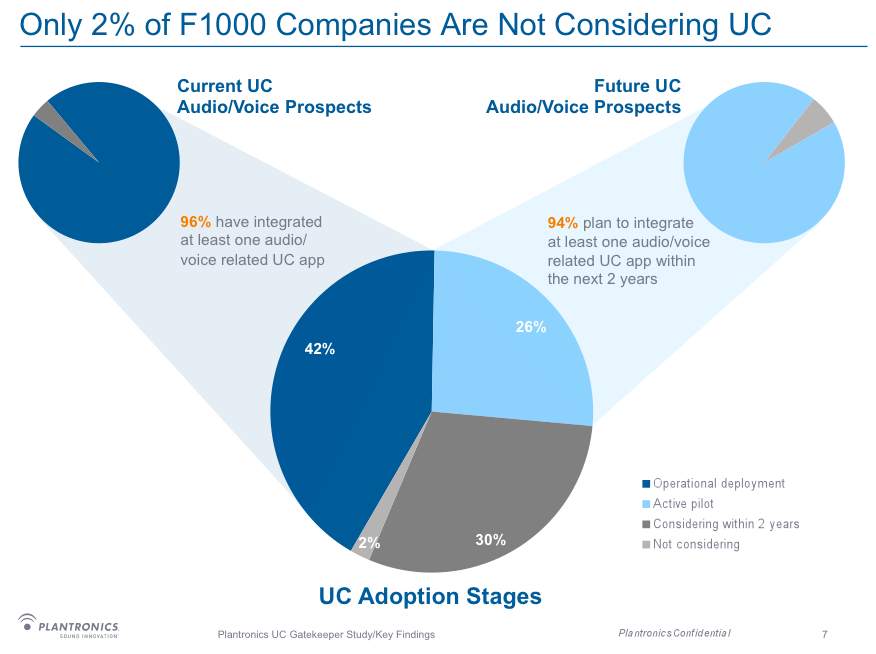Survey: Scattered workforce drives need for smarter communications

The opening of SAPPHIRE this week - not the shows in Frankfurt and Orlando but rather the online virtual conference - serves as testimony that you don't really have to go somewhere to be there.
It also drives home the importance of a recent survey by Plantronics, the company behind the headsets used in many corporate setting, about the adoption of Unified Communications, systems that bring together the full suite of communications, from online chat to Voice over IP to mobile technologies. The survey found that biggest companies already have Unified Computing strategies, with only two percent of the Fortune 1000 not considering it.
At the heart of any argument about Unified Communications is the face of the new "distributed workforce," one that's no longer tied to a cubicle at the office in order to conduct business.
According to the survey, the workforce has been split into three nearly-equal types of employees: onsite employees (37 percent), road warriors (34 percent), and telecommuters (29 percent). With such a scattered workforce - as well as a sluggish economy that forced companies to slash their travel budgets, among other things - an investment in alternative face-to-face meetings and attendance at events gained popularity.
The process is still being rolled out, with desktop video conferencing expected to the next big force. (See chart)
For those of you in IT, this means training time - time spent training and then time spent training the users.
